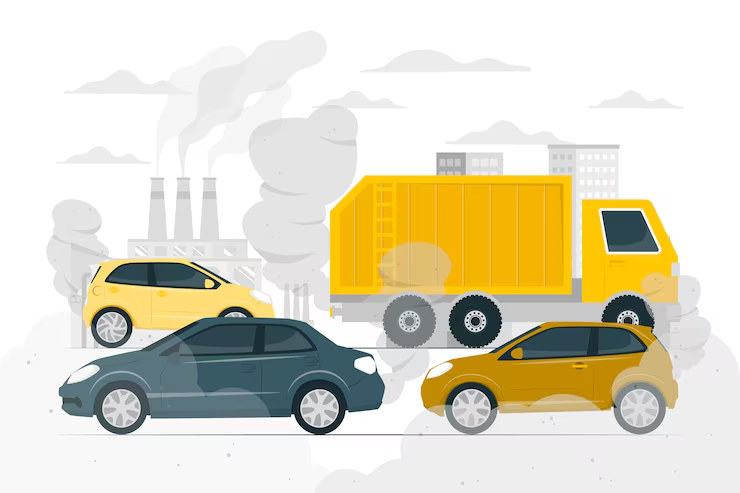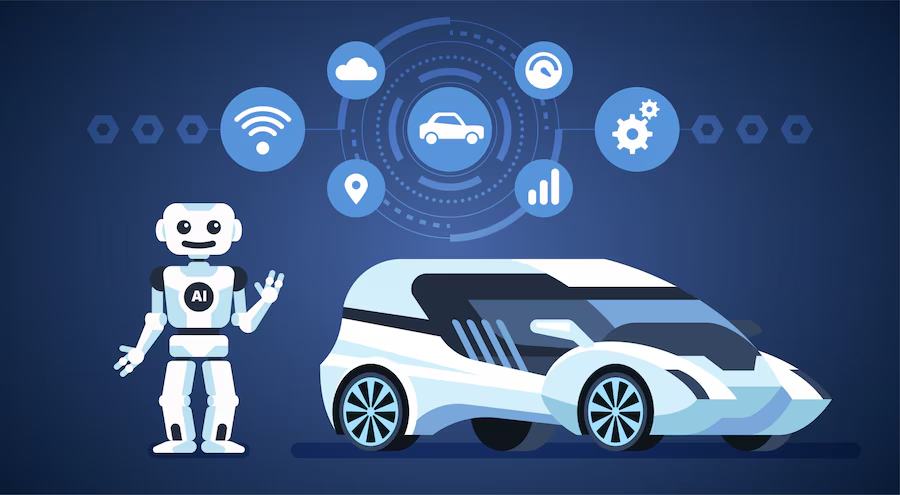The air in the Detroit boardroom crackled, thick with the scent of stale coffee and simmering anxiety. “Another delay,” CEO Marcus Thorne growled, the words echoing the frustration echoing throughout the entire automotive industry. The projected Q4 sales figures were bleeding red, a stark testament to the automotive apocalypse unfolding before our very eyes. It wasn’t a meteor strike or a zombie horde, but something far more insidious: a broken supply chain.
Remember the smooth, efficient hum of “just-in-time” manufacturing? That harmonious symphony of perfectly timed deliveries, a ballet of global logistics? Now, it’s a discordant cacophony. The pandemic ripped through the carefully orchestrated system, exposing its fragility like a sudden, harsh wind tearing through a fragile glass house. The ripple effect? Massive production halts, skyrocketing prices, and a global shortage of everything from microchips to steering wheels.
This isn’t just about empty car lots; it’s about the very fabric of our modern economy fraying at the seams. Supply chain management, once a quiet back-office function, now sits at the forefront of every C-suite conversation. It’s the unseen hand shaping profits, dictating production, and influencing the very cars we drive. For automotive leaders, the stakes are higher than ever. The ability to navigate this crisis, to build resilience into their operations, isn’t just about maintaining profitability – it’s about survival.
This isn’t a story about numbers and spreadsheets; it’s a human story of resilience, innovation, and the desperate search for solutions in the face of unprecedented challenges. Join us as we delve into the heart of this crisis, exploring the cracks in the system, the innovative solutions emerging from the chaos, and the lessons learned that will redefine the future of automotive logistics. The road ahead is uncertain, but one thing is clear: the future of the automotive industry hangs in the balance.
The supply chain, once a largely unseen engine of commerce, now roars into the spotlight, its rhythm a heartbeat felt globally. The pandemic exposed its vulnerabilities, laying bare its intricate network of dependencies and highlighting the precarious balance upon which modern business thrives. But from the chaos, new opportunities bloom – a renaissance of sorts, reshaping the landscape for those brave enough to adapt.

Positive Trends: A Symphony of Innovation
- Digital Transformation – The Maestro’s Baton: The relentless march of technology is orchestrating a beautiful, if chaotic, symphony. AI, machine learning, blockchain – these aren’t just buzzwords; they’re tools transforming everything from inventory management (think Walmart’s precise forecasting using AI) to real-time visibility (UPS’s Orbis tracking system). This digital transformation allows for predictive analytics, agile responses, and unprecedented efficiency. For businesses, the action is clear: invest in digital infrastructure, embrace data-driven decision-making, and cultivate a digitally skilled workforce.
- Sustainability – The Earth’s Harmonious Chorus: Consumers are demanding eco-conscious practices. Companies are responding with sustainable sourcing, reduced emissions, and circular economy models. Patagonia, a pioneer in this space, illustrates the power of ethical sourcing and repair programs, proving that sustainability isn’t just a cost, but a potent marketing tool and a crucial element of long-term success. Businesses must integrate sustainability into their core strategy, not treat it as an afterthought.
- Resilience – The Orchestra’s Unwavering Rhythm: Supply chain resilience has become paramount. The pandemic taught us that diversified sourcing, robust risk management strategies, and near-shoring are no longer optional, but essential. Companies that can adapt to disruptions, anticipate risks, and build flexible supply chains will flourish. This necessitates a move away from overly centralized, lean models to more distributed, agile networks.
Adverse Trends: A Dissonant Note
- Geopolitical Instability – The Unforeseen Cadenza: Global conflicts, trade wars, and political instability inject uncertainty into even the most meticulously planned supply chains. Businesses must anticipate such shocks and develop contingency plans, diversifying their suppliers and building strategic partnerships to weather these storms.
- Talent Shortage – The Missing Instruments: The supply chain field faces a significant skills gap, lacking individuals with expertise in data analytics, AI, and digital technologies. Companies must invest heavily in training and development programs to attract and retain talent, ensuring they have the right players in their orchestra.
- Inflation and Rising Costs – A Crescendo of Expenses: Soaring energy prices, material costs, and transportation expenses put a strain on margins. Businesses must carefully manage costs through efficiency improvements, negotiation with suppliers, and innovative cost-saving strategies.
The Finale: A Call to Action
The future of supply chain management is a dynamic composition, a blend of challenges and opportunities. Companies that embrace digital transformation, prioritize sustainability and resilience, and proactively address the challenges of geopolitical instability, talent shortages, and rising costs will conduct the most harmonious symphony of success. Ignoring these trends is akin to playing a solo instrument in a full orchestra – you might create some sound, but you’ll never create a masterpiece.
Automotive: Imagine the painstaking precision of a Swiss watchmaker, scaled up to a global operation. That’s the challenge facing BMW’s supply chain team. They’re not just moving parts; they’re orchestrating a symphony of microchips, leather hides, and aluminum alloys, all converging at the assembly line with clockwork timing. A single missing sensor, a late shipment of tires – it’s a disruption echoing through the whole system, a domino effect threatening production deadlines and customer satisfaction. Their solution? Real-time tracking, predictive analytics, and a robust network of suppliers meticulously vetted and managed. The result? A smoother, more efficient flow, minimizing downtime and maximizing profit.
Healthcare: Picture a bustling hospital, a battlefield where every second counts. Imagine the adrenaline-fueled race to get a life-saving drug from a distant warehouse to a patient’s bedside. That’s the reality of pharmaceutical supply chains, where temperature-sensitive medications must navigate a complex web of regulations and logistical hurdles. A major player like Pfizer faces this challenge head-on, employing sophisticated cold chain management, drone delivery in remote areas (a literal race against time!), and AI-powered forecasting to anticipate demand spikes during flu season. “It’s not just about moving boxes,” said a Pfizer logistics manager, “it’s about saving lives.”
Manufacturing: The hum of machinery, the metallic tang in the air – a manufacturing plant is a relentless machine itself. Take a company like Nike, churning out millions of sneakers annually. The challenge? Sourcing materials globally, manufacturing efficiently, and getting those shoes to consumers quickly. Their strategy involves strategic partnerships with suppliers, optimized factory locations to minimize shipping costs (think ‘just in time’ manufacturing), and a close eye on consumer trends to avoid overstocking or shortages. A misplaced comma in a production schedule could cost Nike millions.
Technology: Think of the dizzying pace of innovation in the tech world, a whirlwind of new gadgets constantly hitting the market. Apple’s success isn’t just about design; it’s their supply chain’s relentless ability to source rare earth minerals, assemble complex components, and get millions of iPhones into the hands of consumers globally. “It’s about managing risk,” an Apple executive mused, “foreseeing the next bottleneck before it even forms.” This requires sophisticated risk management, flexible manufacturing, and a strong network of trusted partners. One hiccup, and the newest iPhone could be delayed, a potentially catastrophic blow to Apple’s reputation and market share.
“The chip shortage really threw a wrench in things, didn’t it?” Mark, head of procurement at AutoTech, sighed, swirling the ice in his glass. “We’re scrambling to diversify.” This sentiment echoed across the automotive logistics sector in 2023. One key organic strategy was increased supplier visibility. AutoTech, for instance, invested heavily in real-time tracking and data analytics platforms, integrating them directly with their suppliers’ systems. This gave them a clear view of inventory levels, potential disruptions, and lead times – something desperately needed after the semiconductor crisis.
Meanwhile, across town, Elena, CEO of GreenDrive Motors, focused on sustainable supply chains. They launched a program incentivizing suppliers to adopt eco-friendly manufacturing processes and reduce their carbon footprint. This was a strategic move, not just for environmental reasons, but also to preempt future regulations and attract environmentally conscious consumers. This was also aided by advancements in AI powered sustainability scoring tools.
Inorganic growth also played a significant role. “Acquiring LogiFlow was a game-changer,” boasted Robert, the COO of SpeedGear Automotive. LogiFlow specialized in last-mile delivery optimization using AI and autonomous vehicles. This acquisition immediately bolstered SpeedGear’s capabilities, allowing them to offer more efficient and reliable delivery services, a key competitive advantage in the rapidly evolving market.
Another major inorganic approach involved strategic partnerships. Many companies, facing skills shortages in areas like data analytics and AI, forged alliances with technology providers. This allowed them to quickly access the expertise needed to implement advanced supply chain technologies without the burden of in-house development. For example, Electrify Motors partnered with a leading blockchain technology firm to enhance traceability and transparency throughout their supply chain, addressing growing concerns about ethical sourcing of raw materials.
The narrative arc continues. The initial shock of recent disruptions forced a rapid acceleration in the adoption of technology-driven solutions and innovative partnerships. The middle phase involved intensive integration and optimization processes. The endgame is now focusing on building resilient, sustainable, and technologically advanced supply chains, enabling businesses to not only survive, but thrive in a dynamic and demanding landscape. “The future is about agility and collaboration,” concluded Mark, raising his glass, “and we’re ready for it.”

Outlook & Summary: Navigating the Wreckage and Charting a New Course
The automotive industry’s current predicament isn’t just a speed bump; it’s a catastrophic pile-up on the highway of global supply chains. This article peeled back the layers of this crisis, revealing the raw nerve endings of a system stretched to its breaking point. We witnessed firsthand how a seemingly minor disruption—a pandemic, a chip shortage, a geopolitical tremor—can trigger a domino effect of devastating consequences. Remember the eerie silence on dealership lots? The agonizing wait for parts? That’s the human cost of a broken supply chain.
The next 5-10 years won’t be a smooth ride. We’re staring down the barrel of a revolution in supply chain management. The old, linear models are crumbling. Imagine a future where hyper-localized manufacturing, AI-driven predictive analytics, and blockchain-secured transparency are the norm, not the exception. This is the new battlefield, and agility is the ultimate weapon. We’ll need to move beyond reactive firefighting to proactive risk mitigation—a shift from simply managing logistics to orchestrating resilient ecosystems. Think of it as transforming from a single-lane road to a multi-lane highway, each lane representing a diversified supplier network, a new technology, or a different manufacturing strategy.
The key takeaway? This isn’t just about optimizing efficiency; it’s about building resilience. The automotive industry’s near-death experience should serve as a wake-up call for every business relying on complex global supply chains. We’ve reached a critical juncture. The question is: Are you prepared to rebuild your supply chain – not just for today’s challenges, but for the unforeseen storms of tomorrow? Or will you be left stranded on the side of the road, watching the future drive past?





